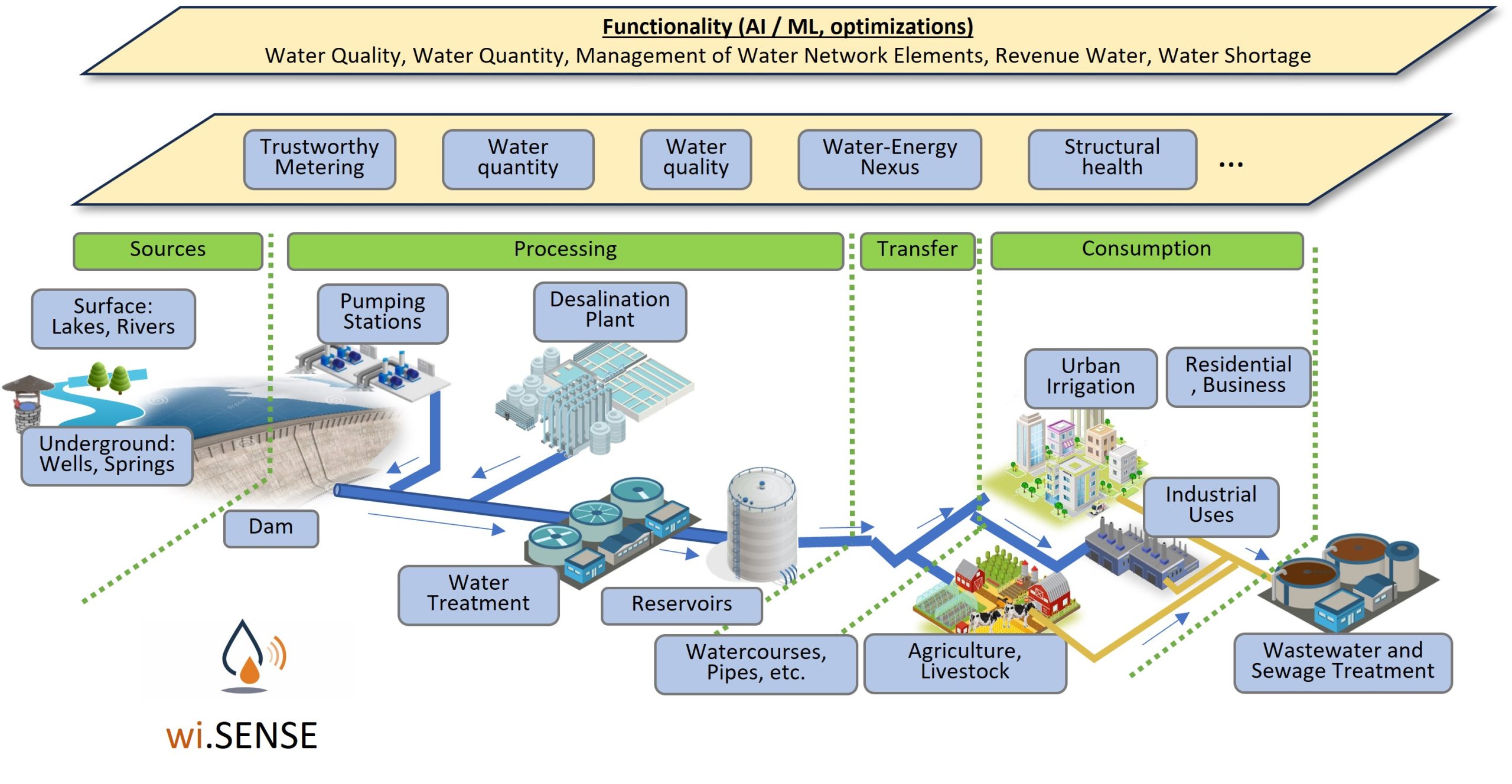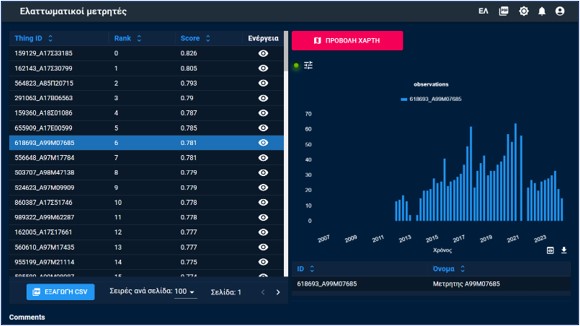



wi.SENSE-energy
Meeting the Growing Need for Sustainable Energy Solutions
In today’s rapidly evolving energy landscape, cities, utilities and industries face increasing pressure to optimize energy management, enhance operational efficiency, and meet sustainability targets. With a strong emphasis on renewable energy adoption, smart infrastructure, and the reduction of carbon footprints, the demand for advanced, data-driven solutions has never been more urgent. wi.SENSE-energy offers a comprehensive Operational Digital Platform (ODP) designed to address these challenges, enabling smarter energy management and promoting sustainability across various sectors.
Key drivers for wi.SENSE Energy’s development include:
Sustainability: Meeting global energy efficiency goals and advancing renewable energy integration.
Cost Efficiency: Reducing energy costs and enhancing operational performance for energy utilities and stakeholders.
Smart Infrastructure: Enabling real-time monitoring, predictive maintenance, and optimization through IoT and AI technologies.
Regulatory Compliance: Supporting utilities and industries in adhering to sustainability regulations and reducing environmental impact.
Comprehensive analysis of wi.SENSE-energy’s features
wi.SENSE-energy is not just a platform but a holistic solution for modern energy management. Its core capabilities are designed to provide actionable insights, optimize energy use, and enable innovative solutions for energy production and distribution. Here’s an analysis of its key features:
Energy metering and enhanced detection
wi.SENSE-energy integrates advanced AI models for detecting energy theft and performing demand prediction, improving real-time monitoring and providing precise consumption insights. This empowers utilities to optimize energy distribution and identify discrepancies in energy usage.
Smart street lighting
The platform revolutionizes urban infrastructure with automated and flexible lighting functions and AI-based motion detection. wi.SENSE-energy includes remote control capabilities for managing street lighting systems, reducing operational costs. By adapting to pedestrian and vehicle movement, it ensures both energy efficiency and public safety.
Infrastructure structural health
wi.SENSE-energy Energy features advanced tools such as optical-thermal cameras, vibration sensors, and digital twin technology to monitor and assess the structural integrity of infrastructure, including cables and pylons. Real-time monitoring of potential threats like fire, suspicious activity, and aging infrastructure ensures proactive maintenance and security.
Energy management
With seamless integration into smart buildings, cities, EV chargers, and industrial settings, wi.SENSE-energy provides AI-powered demand forecasting, eco-friendliness recommendations, and cost-saving strategies. The platform adapts to different energy needs, helping cities and industries optimize consumption, reduce energy waste, and achieve sustainability goals.
Energy production
The platform includes tools for RES (Renewable Energy Source) optimization, production forecasting, and real-time production monitoring. It ensures a balanced and efficient use of renewable energy sources, while addressing challenges like fairness in energy curtailment and production randomness.
By integrating these cutting-edge technologies, wi.SENSE-energy empowers industries, cities, and utilities to achieve smarter, more sustainable energy operations, while preparing for the energy demands of tomorrow.
wi.SENSE-water
Overview
Utilities (energy, water, gas) are essential for the economy and society. As a matter of fact, aspects like “clean water and sanitation”, “affordable and clean energy” are placed at the center of attention, through the UN (United Nations) SDGs (Sustainable Development Goals). In this respect, there are strong pushes to optimize the design and operation of utilities. There is a need for ICT products that will enable the optimization of the configuration, fault / performance / security / accounting (metering) management. Key aspects are metering, consumption and capability prediction, handling of leakages and of outages, securing the installation, water quality, the maximization of the use of renewable energy sources, and others.
WINGS designed and developed a product (wi.SENSE-water) that is suitable for digital twinning for the proactive management of water infrastructures.
Trustworthy Metering
Challenge: Find Defective Meters: those that have significant deviations in their measurements with respect to the actual consumption
Solution
– Defective meters have certain characteristics, behaviour per context
– Model learns and suggests meters with “similar” characteristics
– Indication of few “hundreds” of “most likely” defective – x1000 reduction in complexity
Results
– Platform for enhancing training and inference sets, uploading new lab measurements
– Starting point: Accuracy 99% (self-learning of features of non-defective meters); Precision 40% (Of the 100 meters labelled as defective, 40 are actually defective); Recall 20% (Out of 100 truly defective meters, 20 are found).
Water Quality
Problem
Water Quality Characterization: appropriateness for diverse uses
Solution
Parameters: pH, Conductivity, Turbidity, Oxidation Reduction Potential (ORP), Total Organic Carbon (TOC), Total Suspended Solids (TSS), Temperature, Salinity.
Correlations: estimation of hazard with respect to parameters that are not possible / hard to measure
Impact of human activities, climate change
Computations: quality indexes, indications of appropriateness per envisaged use
Water Quantity – Floods
By using the wi.SENSE-water platform and the installed sensors, flood detection is achieved, and an appropriate notification/alarm is sent that includes information (measurements) from the field along with the coordinates of the point. The notification is displayed in real time on a dashboard, and is forwarded to the corresponding Service, but also an email and SMS with all the information is sent to the appropriate recipients.
Infrastructure
Digital twin of pumping stations include:
– Modeling of pumping station: Creating a digital model that represents the actual structure and function of pumping station, including data such as pipeline networks, tanks, pumps, flows, hydraulic characteristics and wastewater management.
– Data Collection: Collection of real data from sensors, observations and other sources to update and enhance the digital model.
– Analysis and prediction: Use of data and algorithms to analyze and predict the operation of pumping station, including forecasts and potential problems.
– Monitoring and response in real time: The ability to monitor the operation of pumping station in real time and to react immediately to possible emergency situations.
– Scenario simulation: Ability to simulate various scenarios for the planning, development and management of the station.
– Enhancing crisis management: Improved crisis management by anticipating and responding to potential crises, such as floods.
– Visualization of functions in 3D models as shown in the following figure.
These features allow the digital twin to provide a complete virtual representation of the operation and condition of pumping stations, improving their management and efficiency.
Revenue Water
Water Shortage
WasteWater Analysis
Analysis
Parameters (various sources)
BODeff (Effluent biochemical oxygen demand)
CODinf (Influent chemical oxygen demand)
CODeff (Effluent chemical oxygen demand)
TSSinf (Influent total suspended solids)
TSSeff (Effluent total suspended solids)
Further ones: pH, dissolved oxygen,
ORP, flow, etc.
Functionality
Ingestion, Analysis / Predictions,
Correlations, Warnings, Visualization
Regulation compliance
A “map” of the city: health aspects, social interest, trends
Policies: social and environmental aspects.
Get a quote
Recent Articles










